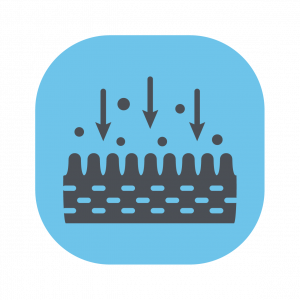Zinc in animal nutrition
Zinc supplementation has been considered in all diets for over a century, to ensure adequate levels for optimal health and productivity. Zinc, as an essential trace element, is involved in the majority of an animal’s biological functions. It is indispensable for:
– optimal growth
– proper functioning of the immune system
– reproduction
Initially, basic inorganic solutions were used. As scientific advances were made, these rapidly proved their limitations. In this way, the quantity of zinc purchased and added to the feed led to low absorption, limiting any valorisation by the animal. Zinc was thus found directly in the faeces, mainly due to complexation phenomena occurring in the digestive tract.
The continuous improvement of breeding performance then inspired the use of more optimized zinc sources. Around 1965, organic solutions offering chemical zinc protection were proposed in formulations, followed thirty years later by “innovative” inorganic solutions offering physical zinc protection.
CAPMAGZn technology
To ensure efficient, responsible and sustainable use of zinc in animal nutrition, TIMAB Magnesium has developed an innovative CAPMAG solution: offering double zinc protection: physical & chemical.

Developed over 6 years of research through a university thesis in Solid State Chemistry and Materials, CAPMAGZn‘s high-performance, patented technology uses magnesium to physically protect zinc. By adjusting zinc solubilization kinetics, CAPMAGZn prevents undesirable complexations (e.g. phytates). Zinc is in its bioavailable form at the site of absorption.
Innovative technology
Careful selection of the zinc source is all the more important as the use of zinc in animal nutrition is subject to strict regulatory constraints. The European Union (EU) has introduced regulations to limit the amount of zinc permitted in animal feed, taking into account the potential impact on the environment and human health. These constraints aim to avoid excessive accumulation of zinc in the soil, as well as to minimize the risk of zinc residues in animal products intended for human consumption.

Improved intestinal absorption

Better use of zinc inputs

Reduced zinc emissions
At the 56èmes Journées de la Recherche Porcine (56th Swine Days’ Research), TIMAB Magnesium had the opportunity to present its latest study: Effects of a Mg-protected ZnO source on performance and gut function of weaned piglets, carried out with the University of Ghent in Belgium.
Discover our poster on the JRP website, highlighting the action of CAPMAGZn on growth performance and digestive function in post-weaning piglets.

